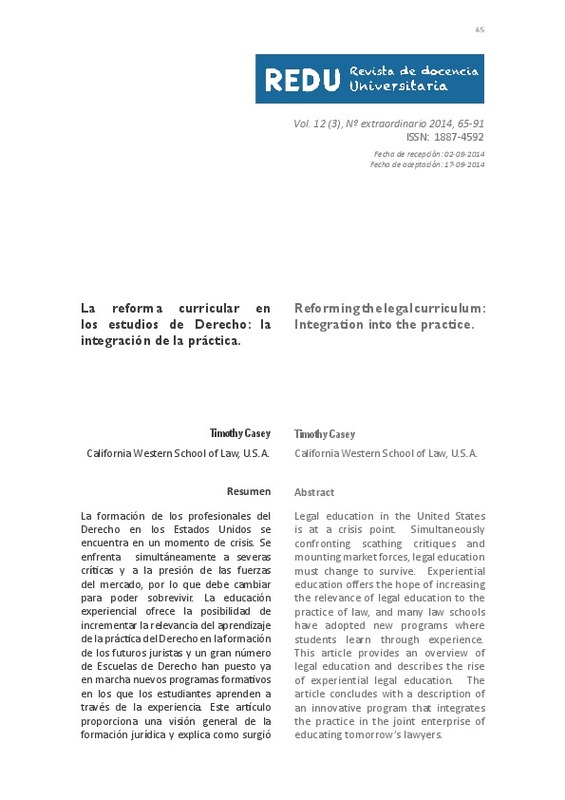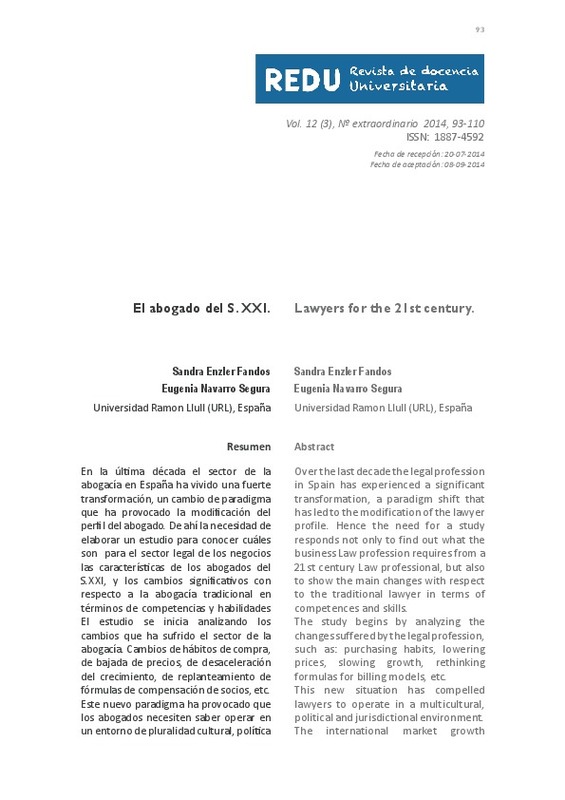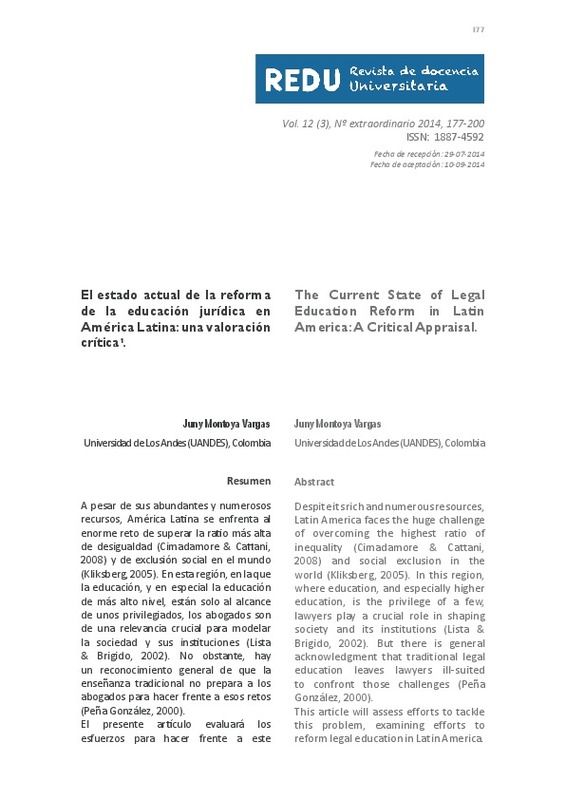A.B.A Standards and Rules of Procedure for Approval of Law Schools (2013-14).
A.B.A., Section of Legal Educ. and Admissions to the Bar, Proposed Standards for Approval of Law Sch. (April 2014), available at http://www.americanbar.org/content/dam/ aba/administrative/legal_education_and_admissions_to_the_bar/201404_src_ meeting_materials_proposed_standards.authcheckdam.pdf
Cindy Adcock, Cindy Batt, Susan Brooks, Justine Dunlap, Carrie Kaas, Kate Kruse, Susan Maze-Rothstein & Ruth Anne Robbins, A Glossary for Experiential Education in Law Schools (2014) (unpublished manuscript available with the author).
[+]
A.B.A Standards and Rules of Procedure for Approval of Law Schools (2013-14).
A.B.A., Section of Legal Educ. and Admissions to the Bar, Proposed Standards for Approval of Law Sch. (April 2014), available at http://www.americanbar.org/content/dam/ aba/administrative/legal_education_and_admissions_to_the_bar/201404_src_ meeting_materials_proposed_standards.authcheckdam.pdf
Cindy Adcock, Cindy Batt, Susan Brooks, Justine Dunlap, Carrie Kaas, Kate Kruse, Susan Maze-Rothstein & Ruth Anne Robbins, A Glossary for Experiential Education in Law Schools (2014) (unpublished manuscript available with the author).
Anthony Amsterdam, Clinical Legal Education - A 21st Century Perspective, 34 J. Legal Educ. 612 (1984).
Margaret Martin Barry, Jon C. Dubin & Peter Joy, Clinical Education for this Millennium: The Third Wave, 7 Clin. L. Rev. 1 (2000).
Frank Bloch, The Androgogical Basis for Clinical Legal Education, 35 Vand. L. Rev. 321 (1982).
Benjamin Bloom, Taxonomy of Educational Objectives (1956).
John S. Bradway, The Beginning of the Legal Clinic of the University of Southern California, 2 S. Cal. L. Rev. 252 (1929)
John S. Bradway, The Nature of a Legal Aid Clinic, 3 S.Cal. L. Rev. 173, 174 (1930)
John S. Bradway, Legal Aid Clinic as a Law School Course, 3 S. Cal. L. Rev. 320 (1929-1930).
John S. Bradway, The Classroom Aspects of Legal Aid Clinic Work, 8 Brook. L. Rev. 373 (1939)
Timothy Casey, Reflective Practice in Legal Education: The Stages of Reflection, 20 Clin. L. Rev. 317 (2014).
Erwin Chemerinsky, Why Not Clinical Education?, 16 Clin. L. Rev. 35 (2009)
Sherman J. Clark, Law School as Liberal Education, 63 J. Legal Educ. 235 (2014).
Robert Condlin, "Tastes Great, Less Filling": TheLaw School Clinic and Political Critique, 36 J. Legal Educ. 45 (1986).
John Dewey, How We Think (1933)
John Dewey, Experience and Education (1933).
Jerome Frank, Why Not a Clinical Lawyer-School?, 81 U. Pa. L. Rev. 907 (1933).
Kenney Hegland, Condlin's Critique of Conventional Clinics: The Case of the Missing Case, 36 J, Legal Educ. 427 (1986).
William Henderson and Rachel M. Zahorsky, The Law School Bubble, ABA Journal, January 2012, p. 30.
Peter Joy, The Law School Clinic as A Model Ethical Law Office, 30 Wm. Mitchell L. Rev. 35 (2003).
Malcolm Knowles, Self-Directed Learning: A Guide for Learners and Teachers (1975)
Malcolm Knowles, Andragogy in Action: Applying Modern Principles of Adult Learning (1984).
David Kolb, Richard Boyatzis & Charalampos Mainemelis, Experiential Learning Theory: Previous Research and New Directions in Perspectives on Cognitive, Learning, and Thinking Styles (Sternberg & Zhang, eds., 2001).
Robert MacCrate (Chair), Task Force on Law Schools and the Profession: Narrowing the Gap, American Bar Association Section on Legal Education and Admissions to the Bar, Statement of Fundamental Lawyering Skills and Professional Values, 1992 (hereinafter MacCrate Report).
Robert MacCrate, Educating a Changing Profession: From Clinic to Continuum, 64 TENN. L. REV. 1099, 1102-03 (1997)
Linda Morton, Janet Weinstein & Mark Weinstein, Pedagogy: Not Quite Grown Up: the Difficulty of Applying an Adult Education Model to Legal Externs, 5 Clin. L. Rev. 469, 476-77 (1999)
Linda Nilson, Teaching at its Best (2nd Ed.)(2003).
Sandy Ogilvy, The Early Development of Clinical Legal Education and Legal Ethics Instruction in U.S. Law Schools, 16 Clin. L. Rev. 1, 3 (2009).
William Perry, Forms of Intellectual and Ethical Development in the College Years: A Scheme (1970).
Deborah L. Rhode, Legal Ethics in Legal Education, 16 Clin. L. Rev. 43 (2009)
William V. Rowe, Legal Clinics and Better Trained Lawyers-A Necessity, 11 ILL. L. REV. 591, 591 (1917)
David Santacroce & Robert Keuhn, The 2010-11 Survey of Applied Legal Education (CSALE 2012), available at http://www.csale.org.files/CSALE.Report.on.2010-11. Survey.5.16.12.Revised.pdf
Donald A. Schön, The Reflective Practitioner: How Professionals Think in Action (1983).
David Segal, What They Don't Teach Law Students: Lawyering, New York Times, November 20, 2011, p. Available at http://www.nytimes.com/2011/11/20/business/afterlaw-school-associates-learn-to-be-lawyers.html?_r=1
Marjorie Shultz & Sheldon Zedeck, Predicting Lawyer Effectiveness: Broadening the Basis for Law School Admission Decisions, 36 Law & Social Inquiry, Vol. 3 620 (2011).
Roy Stuckey and Others, Best Practices for Legal Education: A Vision and a Roadmap, 2007.
Thomas Kuhn, The Structure of Scientific Revolution (1966).
William M. Sullivan, Anne Colby, Judith W. Wenger, Lloyd Bond and Lee S. Shulman, Educating Lawyers: Preparation for the Profession of Law, Jossey-Bass, 2007 [hereinafter, "Carnegie Report"].
Brian Tamanaha, Failing Law Schools (Univ. Chi. Press 2012).
Brian Tamanaha, Is Law School Worth the Cost?, 63 J. Legal Educ. 173 (2013).
Karen Tokarz, et al., Legal Education at a Crossroads: Innovation, Integration, and Pluralism Required!", 43 Journal of Law and Policy 11 (2014).
Thorsten Veblen, The Higher Learning in America (New York, Wang & Hill, 1962, reprint of 1918).
[-]











